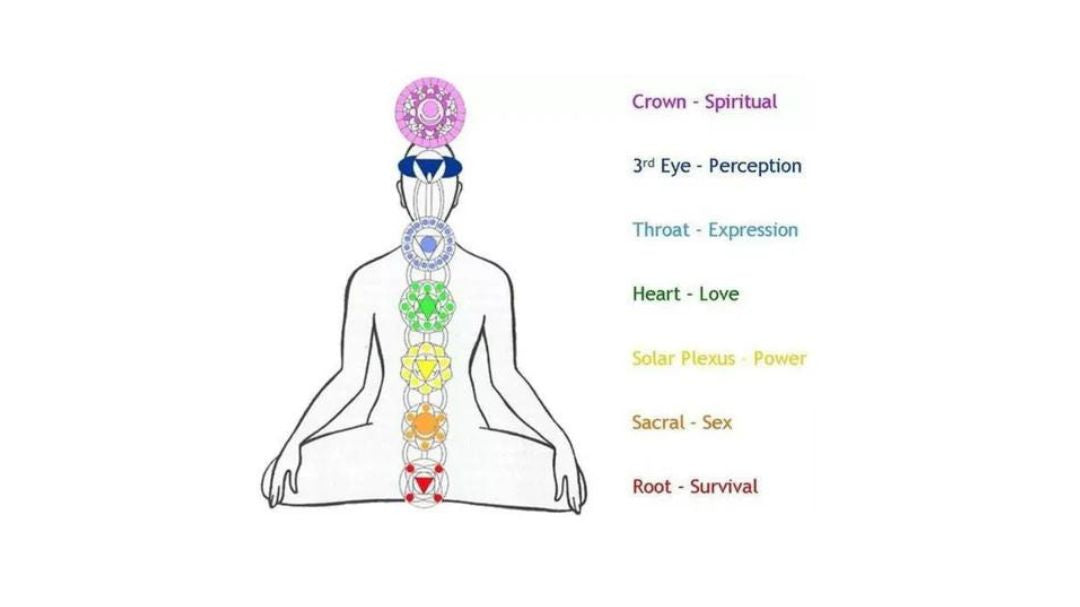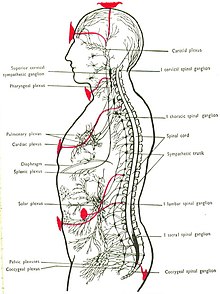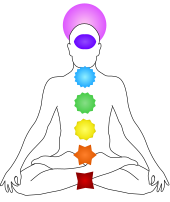
Understanding the Differences Between Our Physical Body and Our Subtle Body
Share
The Chakras
Following is a very good explanation of the difference in our "physical bodies" (mass) and our "subtle bodies", (energy), the 'psychological, emotional, mind, non-physical'.
The Chakras are part of esoteric medieval-era beliefs about physiology and psychic centers that emerged across Indian traditions.[22][28] The belief held that human life simultaneously exists in two parallel dimensions, one "physical body" (sthula sarira) and other "psychological, emotional, mind, non-physical" it is called the "subtle body" (sukshma sarira).[29][note 1] This subtle body is energy, while the physical body is mass. The psyche or mind plane corresponds to and interacts with the body plane, and the belief holds that the body and the mind mutually affect each other.[5] The subtle body consists of nadi (energy channels) connected by nodes of psychic energy called chakra.[3] The belief grew into extensive elaboration, with some suggesting 88,000 chakras throughout the subtle body. The number of major chakras varied between various traditions, but they typically ranged between four and seven.[3][4] Nyingmapa Vajrayana Buddhist teachings mention eight chakras and there is a complete yogic system for each of them.
The important chakras are stated in Hindu and Buddhist texts to be arranged in a column along the spinal cord, from its base to the top of the head, connected by vertical channels.[5][6] The tantric traditions sought to master them, awaken and energize them through various breathing exercises or with assistance of a teacher. These chakras were also symbolically mapped to specific human physiological capacity, seed syllables (bija), sounds, subtle elements (tanmatra), in some cases deities, colors and other motifs.[3][5][31]
Belief in the chakra system of Hinduism and Buddhism differs from the historic Chinese system of meridians in acupuncture.[6] Unlike the latter, the chakra relates to subtle body, wherein it has a position but no definite nervous node or precise physical connection. The tantric systems envision it as continually present, highly relevant and a means to psychic and emotional energy. It is useful in a type of yogic rituals and meditative discovery of radiant inner energy (prana flows) and mind-body connections.[6][32] The meditation is aided by extensive symbology, mantras, diagrams, models (deity and mandala). The practitioner proceeds step by step from perceptible models, to increasingly abstract models where deity and external mandala are abandoned, inner self and internal mandalas are awakened.[33][34]
These ideas are not unique to Hindu and Buddhist traditions. Similar and overlapping concepts emerged in other cultures in the East and the West, and these are variously called by other names such as subtle body, spirit body, esoteric anatomy, sidereal body and etheric body.[35][36][30]
The seven chakra system
The more common and most studied chakra system incorporates six major chakras along with a seventh center generally not regarded as a chakra. These points are arranged vertically along the axial channel (sushumna nadi in Hindu texts, Avadhuti in some Buddhist texts).[56] According to Gavin Flood, this system of six chakras plus the sahasrara "center" at the crown first appears in the Kubjikāmata-tantra, an 11th-century Kaula work.[57]
It was this chakra system that was translated in the early 20th century by Sir John Woodroffe (also called Arthur Avalon) in the text The Serpent Power. Avalon translated the Hindu text Ṣaṭ-Cakra-Nirūpaṇa meaning the examination (nirūpaṇa) of the seven (ṣaṭ) chakras (cakra).[58]
The Chakras are traditionally considered meditation aids. The yogi progresses from lower chakras to the highest chakra blossoming in the crown of the head, internalizing the journey of spiritual ascent.[59] In both the Hindu kundalini and Buddhist candali traditions, the chakras are pierced by a dormant energy residing near or in the lowest chakra. In Hindu texts she is known as Kundalini, while in Buddhist texts she is called Candali or Tummo (Tibetan: gtum mo, "fierce one").[60]
Western chakra system
History

Kurt Leland, for the Theosophical Society in America, concluded that the western chakra system was produced by an "unintentional collaboration" of many groups of people: esotericists and clairvoyants, often theosophical; Indologists; the scholar of myth, Joseph Campbell; the founders of the Esalen Institute and the psychological tradition of Carl Jung; the colour system of Charles W. Leadbeater's 1927 book The Chakras,[65] treated as traditional lore by some modern Indian yogis; and energy healers such as Barbara Brennan.[55][66] Leland states that far from being traditional, the two main elements of the modern system, the rainbow colours and the list of qualities, first appeared together only in 1977.[55]
The concept of a set of seven chakras came to the West in the 1880s; at that time each chakra was associated with a nerve plexus.[55] In 1918, Sir John Woodroffe, alias Arthur Avalon, translated two Indian texts, the Ṣaṭ-Cakra-Nirūpaṇa and the Pādukā-Pañcaka, and in his book The Serpent Power drew Western attention to the seven chakra theory.[67]
In the 1920s, each of the seven chakras was associated with an endocrine gland,[55] a tradition that has persisted.[68][69][70] More recently, the lower six chakras have been linked to both nerve plexuses and glands.[71] The seven rainbow colours were added by Leadbeater in 1927; a variant system in the 1930s proposed six colours plus white.[55] Leadbeater's theory was influenced by Johann Georg Gichtel's 1696 book Theosophia Practica, which mentioned inner "force centres".[72]
Psychological and other attributes such as layers of the aura, developmental stages, associated diseases, Aristotelian elements, emotions, and states of consciousness were added still later.[55] A wide range of supposed correspondences such as with alchemical metals, astrological signs and planets, foods, herbs, gemstones, homeopathic remedies, Kabbalistic spheres, musical notes, totem animals, and Tarot cards have also been proposed.[55]
Shared under https://creativecommons.org/licenses/by-sa/3.0/
To read much more on this subject: https://en.wikipedia.org/wiki/Chakra
Namaste,

